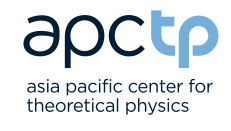Speaker
Description
RAON is the flagship rare isotope accelerator and science facility in Korea. After the blessing of the Korean government's announcement for the construction of a rare isotope accelerator in 2009, the construction of RAON was launched in 2011 by the Rare Isotope Science Project (RISP) under Institute for Basic Science (IBS) to aim for a large scale basic science research facility. RAON was designed to produce a variety of stable and rare isotope beams to be used for research in basic science and various applications. RAON consists of a heavy ion superconducting linear accelerator (linac) as the driver of IF (In-flight Fragmentation) system and a proton cyclotron as the driver for the ISOL (Isotope Separation On-Line) system and a superconducting post-accelerator linac for the ISOL system. The ISOL and IF systems can be operated independently. In addition, the rare isotopes produced by the ISOL system can be injected into the superconducting linac SCL3 for further acceleration to higher energies to produce even more exotic rare isotopes. This combined scheme of the ISOL and IF may be referred to as ISOLIF. The construction of buildings and supporting facilities of RAON is finished and developments of major instruments for superconducting linear accelerators, cryo-plant systems, ISOL facility with Cyclotron, experimental facilities, and the post-accelerator superconducting linear accelerator (SCL3) are mostly done. Recently, the first phase of the SCL3 beam commissioning experiment using the Argon beam from the RAON injector system was carried out successfully. ISOL facility with a 70 MeV proton cyclotron, and low-energy experimental facilities such as KoBRA (Korea Broad acceptance Recoil Spectrometer and Apparatus) are also prepared for beam commissioning. Here, we report on the overview and current status of the RAON heavy ion accelerator facility.

